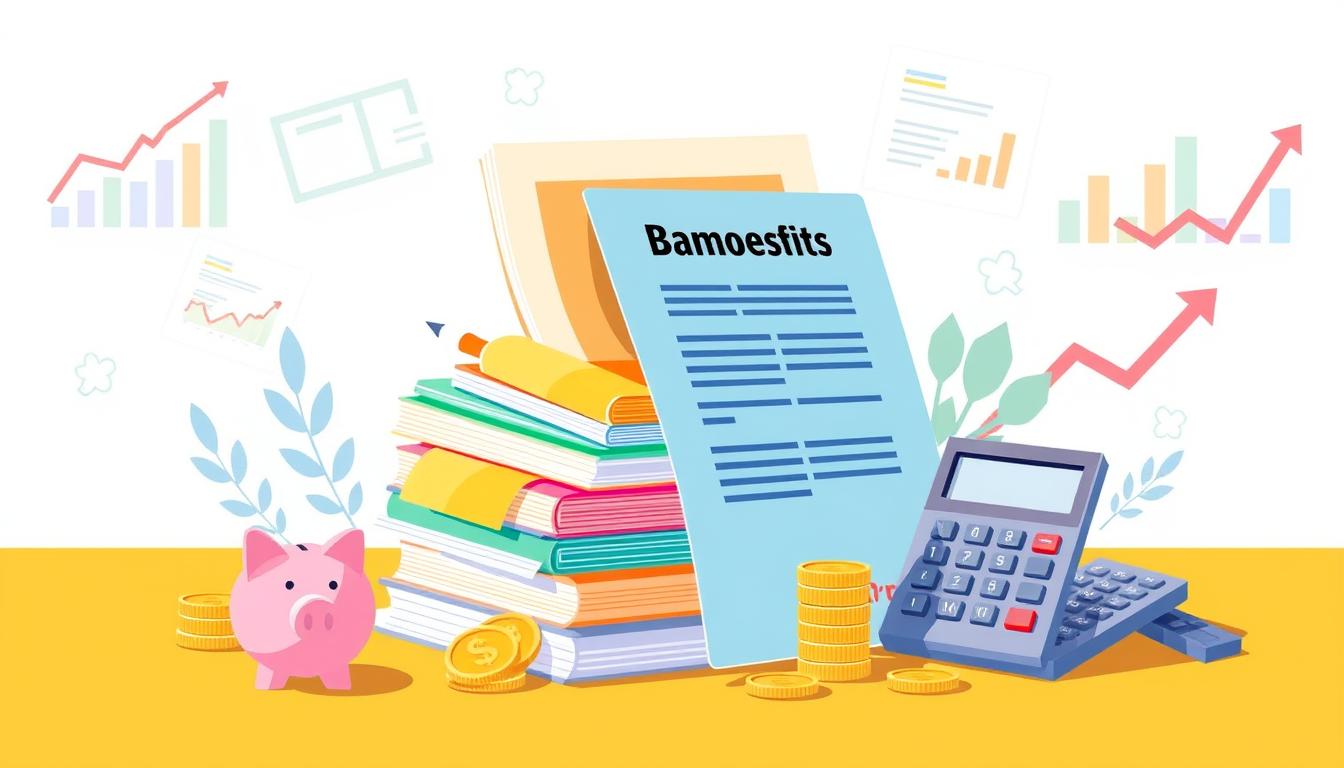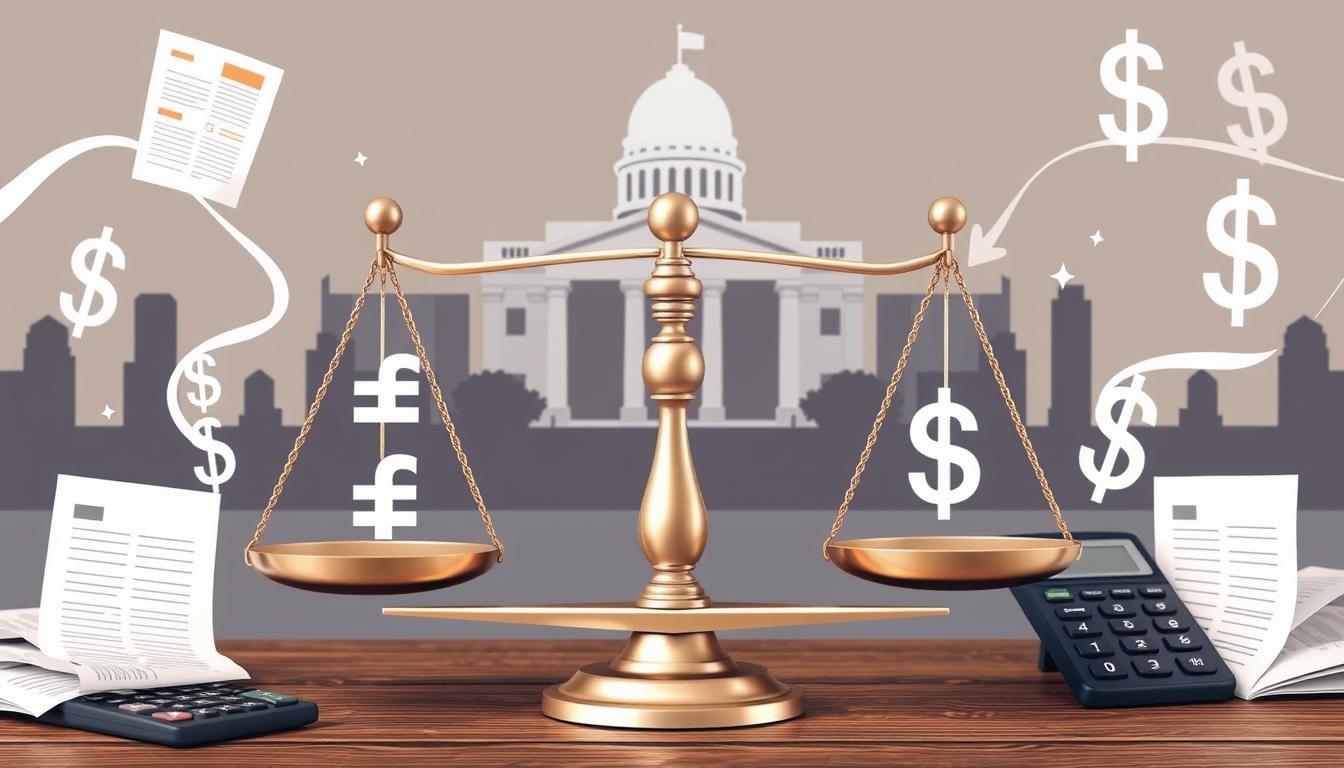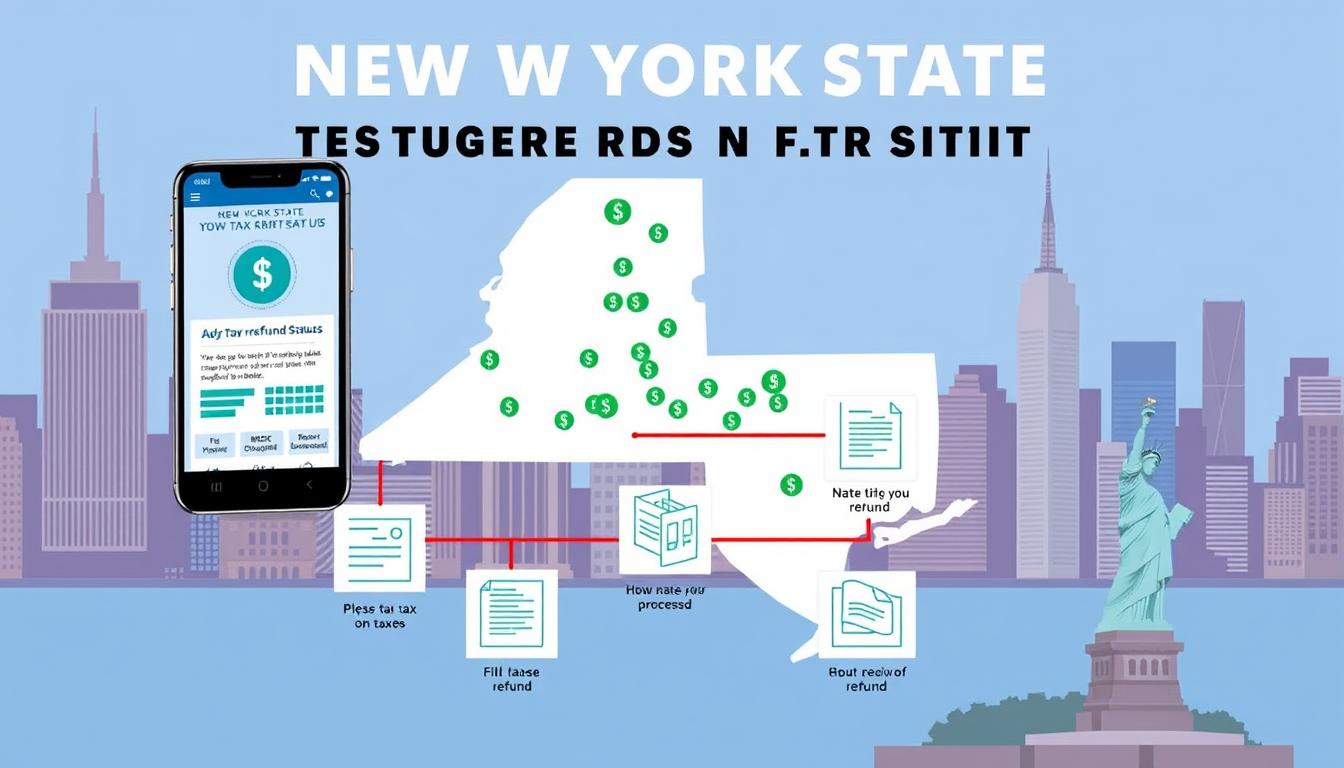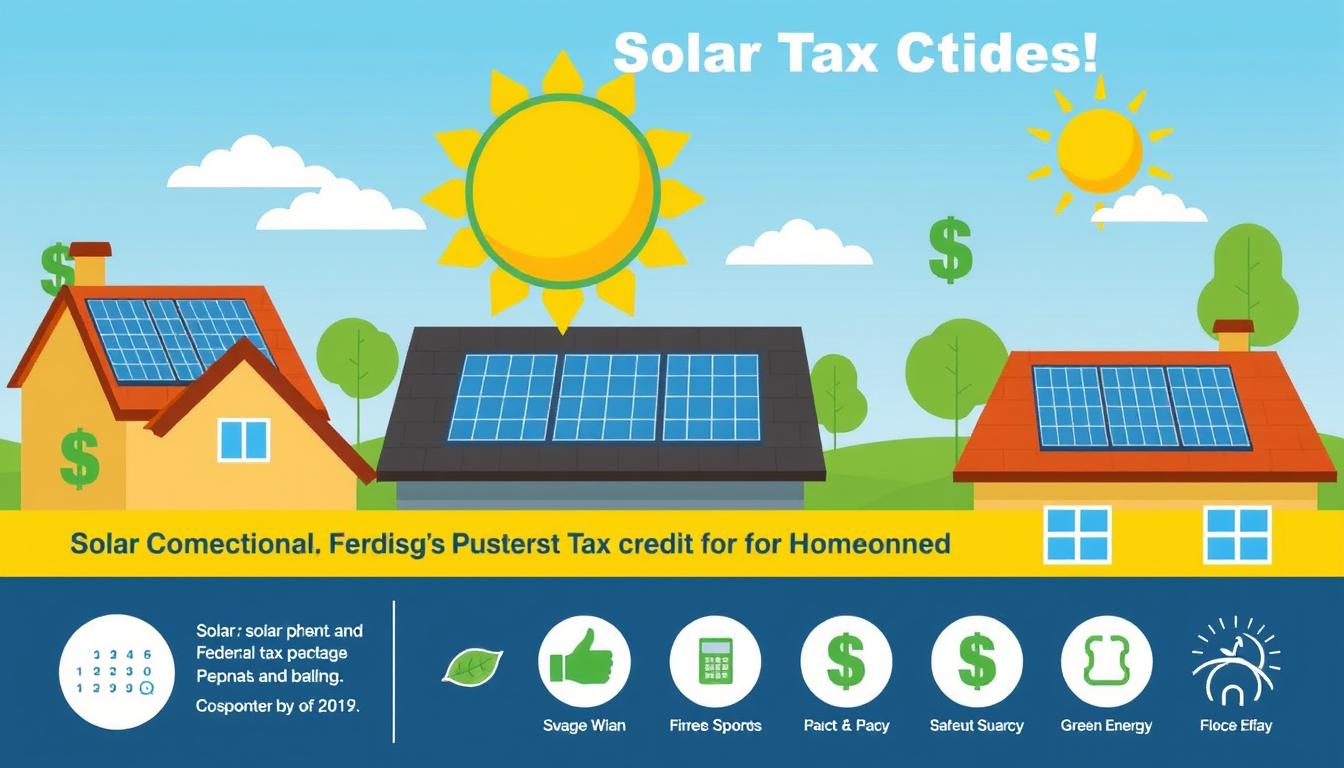As tax season approaches, you might find yourself contemplating the ever-growing list of expenses and responsibilities that seem to pile up month after month. The stress of financial obligations can feel overwhelming, and you may wonder how to maximize savings while dealing with the intricacies of your tax obligations. Understanding how to leverage key tax benefits can provide a sense of relief and control over your financial future. By navigating the maze of tax deductions, you can reduce your taxable income and keep more of your hard-earned money in your pocket. Imagine putting that extra cash toward something meaningful—be it a dream vacation, a college fund, or a much-needed home improvement. This guide aims to enlighten you on various deductions you may qualify for, helping you create a strategy to achieve optimal tax savings and solidify your financial planning going forward1.
Key Takeaways
- Understanding tax deductions can significantly maximize savings.
- Knowing your eligibility for different tax benefits can help you retain more income.
- Effective planning can lead to substantial tax savings each year.
- Deductions can cover a range of expenses, making it vital to stay informed.
- Consulting a tax professional can provide personalized guidance on the best strategy for you.
Understanding Tax Deductions: A Beginner’s Guide
Tax deductions, often described as tax write-offs, are essential for managing your finances effectively. By reducing your taxable income, they can significantly lower your overall tax bill. Understanding these deductions is crucial for maximizing your savings.
What Are Tax Deductions?
Tax deductions allow you to subtract specific expenses from your total income to reduce your taxable income. Common deductible expenses include mortgage interest, charitable donations, and certain medical expenses. The standard deduction for tax years 2024 and 2025 varies based on filing status, such as $14,600 for single individuals, $29,200 for married couples filing jointly, and $21,900 for heads of households2. It’s noteworthy that taxpayers aged 65 or older or who are visually impaired can claim additional deductions of $1,550 in 2024 and $1,500 in 20233.
Why Are They Important?
Recognizing the significance of tax deductions can lead to substantial savings each tax season. They reduce the amount of income subject to tax, which can lower your total tax bill. For instance, itemized deductions provide opportunities for savings on various expenses, such as medical and dental costs exceeding 7.5% of adjusted gross income2. Additionally, self-employed individuals, numbering over 16 million in the U.S., can take advantage of various deductions like home office expenses and half of their Medicare and Social Security taxes3. Importantly, tax laws can change, impacting available deductions, so consulting with a tax professional is advisable to navigate this complex landscape effectively.
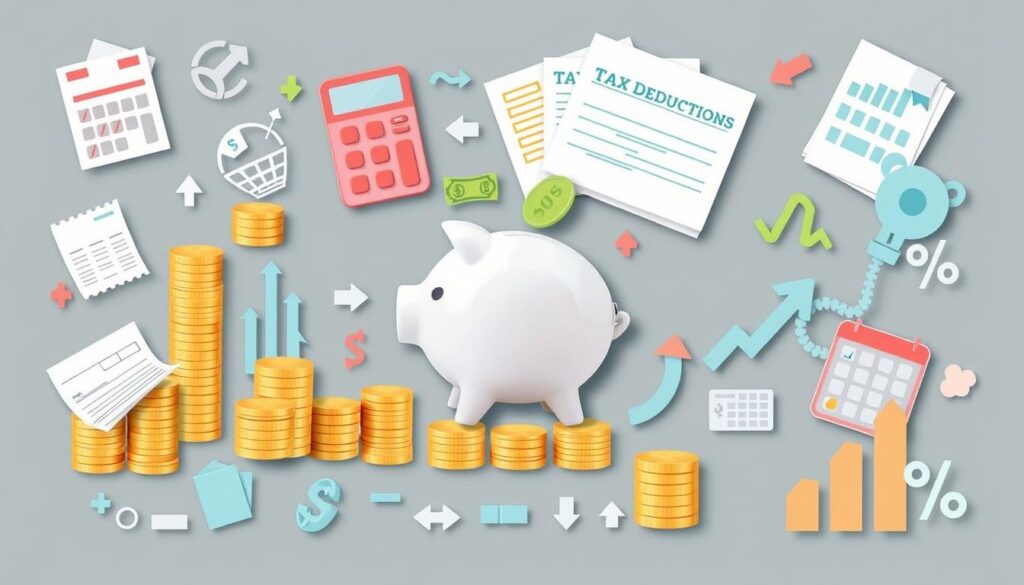
Common Types of Tax Deductions You Should Know
Understanding the various types of tax deductions is crucial for making informed financial decisions. As you navigate the tax landscape for 2024, familiarize yourself with three key types: standard deductions, itemized deductions, and above-the-line deductions. Each offers unique benefits and can significantly impact your overall tax liability.
Standard Deductions
The standard deduction provides a flat-dollar amount that reduces your taxable income based on your filing status. For the 2024 tax year, the standard deduction for single filers or married individuals filing separately is set at $14,600, while it rises to $29,200 for couples filing jointly4. Utilizing this simplified deduction allows many taxpayers to bypass the need for detailed record-keeping associated with itemized deductions, making tax filing easier while potentially maximizing savings.
Itemized Deductions
In some situations, itemized deductions may yield a larger tax benefit than standard deductions. This method enables you to detail specific expenses, such as medical costs, mortgage interest, and charitable contributions, on your tax return. Depending on your situation, these individual itemized deductions can surpass the standard deduction limit, ultimately resulting in a lower taxable income. For instance, you can deduct contributions made to charity up to 60% of your adjusted gross income5.
Above-the-Line Deductions
Above-the-line deductions are another powerful tool for reducing taxable income and are available to all taxpayers. They include deductions such as student loan interest, which allows borrowers to deduct up to $2,500 from their taxable income5. Contributions to Health Savings Accounts (HSA) also qualify, with limits set at $4,150 for individual coverage and $8,300 for family coverage in 20244. Understanding these deductions empowers you to reduce your adjusted gross income (AGI), impacting your overall tax bracket and liability.

How to Determine Which Deduction is Right for You
Choosing the right deduction can seem challenging, yet understanding your options allows you to maximize your tax benefits. Evaluating your tax situation involves a deep dive into your financial records, including total expenses and their alignment with available tax deductions.
Evaluating Your Tax Situation
Begin by reviewing your prior year’s returns to identify past deductible expenses. Understanding what you claimed previously can provide insight into what adjustments need to be made for the current tax year. With the 2023 Standard Deduction set at $13,850 for taxpayers filing as Single or Married Filing Separately, $20,800 for those filing as Head of Household, and $27,700 for taxpayers filing jointly, determining if your itemized deductions exceed these amounts becomes critical6.
Factors to Consider
Several factors will guide your decision on whether to claim standard or itemized deductions. Your filing status, income level, and specific deductible expenses play significant roles in this evaluation. Nearly 90% of taxpayers opt for the standard deduction due to its simplicity6. If your itemized deductions are greater, you need to apply them using Schedule A (Form 1040), which items out deductions7. Older taxpayers or those with visual impairments may qualify for higher standard deductions, further influencing your choice. Ultimately, enlisting tools such as the Interactive Tax Assistant (ITA) can clarify your options and assist in navigating allowable deductions, ensuring you don’t miss out on valuable savings7.

Maximizing Your Standard Deduction
Understanding how to maximize your standard deduction can lead to significant savings during tax season. The standard deduction varies by filing status, providing a basic level of tax deductions that most individuals qualify for without needing to itemize their expenses. For the 2024 tax year, the amounts are set at $14,600 for single filers and $28,300 for married couples filing jointly8. Knowing who qualifies for these benefits is crucial in effectively leveraging your tax strategy.
Who Qualifies for the Standard Deduction?
Most taxpayers automatically qualify for the standard deduction based on their filing status. Certain circumstances may allow for a larger deduction, including:
- Being 65 or older, which increases your standard deduction by specific amounts based on your filing category8.
- Filing as head of household, which offers a higher standard deduction than single filers8.
- Being blind, which can also add to your deduction.
Strategies to Increase Your Standard Deduction
To maximize your standard deduction, consider the following strategies:
- Evaluate Filing Status: Sometimes, changing your filing status can increase your deduction.
- Contributions to Tax-Advantaged Accounts: Maximizing contributions to Health Savings Accounts (HSAs) or retirement accounts like traditional IRAs can help lower your taxable income. For instance, in 2024, individuals can contribute up to $4,150, while families can double that amount9.
- Timing Expenses: Aligning certain deductible expenses with your filing status can play a critical role in enhancing your deductions.

Itemized Deductions: What You Can Claim
Itemized deductions can be a powerful tool for taxpayers looking to reduce their taxable income. Instead of relying solely on the standard deduction, exploring eligible expenses can lead to significant savings. Common itemized deductions include medical expenses, charitable contributions, and mortgage interest, each providing unique benefits for various taxpayers.
Medical Expenses
For the tax year 2025, taxpayers can deduct unreimbursed medical and dental expenses that exceed 7.5% of their adjusted gross income (AGI)10. This means if you incur substantial medical costs, you may be able to claim these as deductible expenses on your tax return. Keeping detailed records of medical bills and receipts is crucial for substantiating these deductions.
Charitable Contributions
Charitable contributions are notable itemized deductions, allowing taxpayers to deduct donations generally up to 60% of their AGI. This percentage can vary based on the type of contribution and the organization receiving the donation10. Staying informed about rules guiding tax deductions for homeowners can further enhance the impact of these contributions on your tax outcome.
Mortgage Interest
The mortgage interest deduction remains a key benefit for homeowners, allowing deductions on interest paid on loans up to $750,000 for joint filers and $375,000 for married couples filing separately for homes purchased after December 201710. For those with homes purchased before this date, different rules may apply. Incorporating these itemized deductions can lead to higher savings on taxable income while enjoying the advantages of homeownership.

| Deductions | Limits | Eligibility Criteria |
|---|---|---|
| Medical Expenses | Exceeds 7.5% of AGI | Unreimbursed expenses only |
| Charitable Contributions | Up to 60% of AGI | Donations to qualifying charities |
| Mortgage Interest Deduction | $750,000 (married jointly) | Interest on qualified home loans |
| State and Local Taxes (SALT) | $10,000 maximum | Combined state and local taxes |
Understanding and maximizing itemized deductions can greatly impact your overall tax liability. By carefully tracking deductible expenses, you can ensure you are taking full advantage of the opportunities available11.
Tax Deductions for Homeowners
As a homeowner, you can take advantage of various tax deductions that significantly reduce your taxable income. Understanding tax deductions for homeowners can equip you with the knowledge to effectively manage your finances.
Property Taxes
Property taxes play a vital role in tax deductions for homeowners. You can deduct property taxes up to $10,000 if married and filing jointly or $5,000 for single filers and those married filing separately12. This deduction can lead to substantial savings over the years, especially in areas with high property tax rates. Being aware of these deductions allows you to reduce your overall tax liability efficiently.
Home Office Deduction
If you use part of your home exclusively for business purposes, you may qualify for the home office deduction. This allows you to claim a portion of your home expenses, including utilities, internet, and repairs, thereby maximizing your tax benefits. The home office deduction can be especially advantageous for self-employed individuals or those who work from home, ensuring that you don’t overlook any potential deductions available to you.

As you prepare for tax season, keep records of your property taxes and expenses related to your home office. Proper documentation will strengthen your claims and contribute to a smoother tax filing process. Knowing these tax deductions for homeowners empowers you to enhance your financial planning, potentially saving you thousands.
| Deductions | Married Filing Jointly | Single or Married Filing Separately |
|---|---|---|
| Property Taxes Deductible | $10,000 | $5,000 |
| Mortgage Interest Limit | $750,000 | $375,000 per spouse |
By understanding these essential tax deductions, you can optimize your tax return and keep more money in your pocket. Stay informed and proactive about your finances to make the most of the benefits available to you as a homeowner13.
Deductions for Education Expenses
Education is often a significant investment, and understanding the available deductions can help you offset some of the financial burden. You may find opportunities for considerable savings through various education tax deductions, including the tuition and fees deduction and the student loan interest deduction.
Tuition and Fees Deduction
This deduction is designed to reduce your taxable income by allowing you to deduct eligible expenses related to higher education. You can claim this deduction for tuition, fees, and other required expenses at an educational institution. Qualified education expenses can be paid by you, your spouse if filing jointly, or a dependent student, among others14. It’s important to note that these expenses must be incurred for academic periods starting in the tax year or within the first three months of the following year14.
Student Loan Interest Deduction
The student loan interest deduction provides up to $2,500 for interest paid on qualified student loans, making it valuable for many taxpayers15. You can claim this deduction if your modified adjusted gross income is less than $80,000. This deduction is particularly beneficial if you are paying off loans while still pursuing your education or recently graduated. Remember, expenses like room and board or personal living expenses generally do not qualify for education tax deductions, so it’s crucial to keep track of what is eligible14.

| Deduction Type | Maximum Amount | Eligibility Criteria |
|---|---|---|
| Tuition and Fees Deduction | Varies | Eligible expenses for qualified education |
| Student Loan Interest Deduction | $2,500 | Modified AGI under $80,000 |
Utilizing these education tax deductions can significantly impact your overall financial situation, especially in a time when student debt is prevalent. Understanding the details and qualifying criteria can empower you to make better financial choices as you navigate your education journey15.
Utilizing Tax Deductions for Retirement Contributions
Planning for retirement involves strategically utilizing tax deductions for retirement contributions. By taking advantage of programs such as traditional IRA contributions and 401(k) contributions, you can significantly reduce your taxable income while building a secure financial future. Understanding these options enhances your ability to maximize your savings.
Traditional IRA Contributions
Contributing to a Traditional IRA may allow for a tax deduction that helps lower your current taxable income. For individuals, the maximum contribution eligible for the Saver’s Credit is $2,000, with a maximum credit of $1,000 available16. The tax benefits from traditional IRA contributions apply largely depending on your income and filing status, making them an effective tool for retirement planning16. Knowing that the credit rates can vary annually is essential, as they are based on adjusted gross income thresholds. In 2024, if your income does not exceed $46,000 as a married couple filing jointly, you could potentially qualify for a credit of 50%16.
401(k) Contributions
401(k) contributions provide an opportunity for tax-deferred growth, meaning you won’t pay taxes on the money until it is withdrawn in retirement. The contribution limit for individuals to a 401(k) plan has increased to $23,000 in 2024, with those aged 50 and over eligible for additional catch-up contributions of $7,50017. It’s noteworthy that contributions you make can further reduce your taxable income, potentially lowering your tax bracket18. Additionally, employer contributions do not count toward your individual limit, offering a supplementary tax benefit18.

| Type of Contribution | Maximum Contribution (2024) | Credit Eligibility |
|---|---|---|
| Traditional IRA | $2,000 for individuals | Based on AGI thresholds |
| 401(k) | $23,000 (plus $7,500 catch-up for 50+) | No AGI limit on contributions |
Business Expenses: Deductions for Self-Employed Individuals
As a self-employed individual, understanding the various business deductions available can significantly reduce your tax liability. It’s crucial to keep detailed records of your expenses to maximize your savings on self-employed tax deductions. Two major categories of deductions that can help lower your taxable income are operating costs and vehicle expenses.
Operating Costs
Operating costs encompass a wide range of business-related expenses. These may include supplies, utilities, and rent for your business space. Notably, if your expenses are less than your income, the difference becomes net profit and is included in your overall income on Form 104019. This highlights the importance of tracking all eligible costs to support your deductions. For example, self-employed individuals can deduct a portion of their home expenses if they qualify for the home office deduction, which allows for deductions on rent, mortgage interest, utilities, and repairs20.
Vehicle Expenses
Your vehicle may also contribute to significant business deductions. If used for business purposes, you can choose between two methods to deduct these expenses: the standard mileage rate or actual expenses incurred. The standard mileage rate allows for a deduction based on miles driven for business, while the actual expense method lets you deduct costs like gas, repairs, and depreciation. Proper documentation is essential in either case to substantiate your claims to ensure you claim all permissible vehicle-related deductions21.

In summary, identifying and claiming your operating costs and vehicle expenses can lead to substantial tax savings for your self-employed business. Making the most out of these self-employed tax deductions is a vital step in effective tax management192021.
Tax Credits vs. Tax Deductions: Know the Difference
Understanding the key differences between tax credits and tax deductions is essential for optimizing your financial strategy. While both categories provide valuable tax benefits, their functions and implications vary significantly. Tax credits offer a direct reduction in the amount of tax owed, whereas deductions reduce your taxable income, which can lead to a lower overall tax bill.
What Are Tax Credits?
Tax credits represent a dollar-for-dollar reduction of your tax liability, making them particularly powerful savings tools. For instance, both refundable tax credits, such as the earned income tax credit and child tax credit, can yield a tax refund if the credit exceeds the amount owed, enhancing your financial situation greatly22. On the other hand, nonrefundable tax credits won’t provide refunds exceeding your tax liability22. Their impact can drastically differ from deductions.
Why Deductions Are Still Valuable
Deductions, while not as strong as tax credits, can still significantly reduce your taxable income. For example, the standard deduction for the tax year 2023 varies with filing status: single filers and married people filing separately qualify for $13,850, while joint filers enjoy $27,70022. Itemizing deductions can further benefit those whose total deductions surpass the standard deduction amount23. It’s crucial to note the difference between tax credits and deductions, as utilizing both strategically can lead to greater tax benefits.
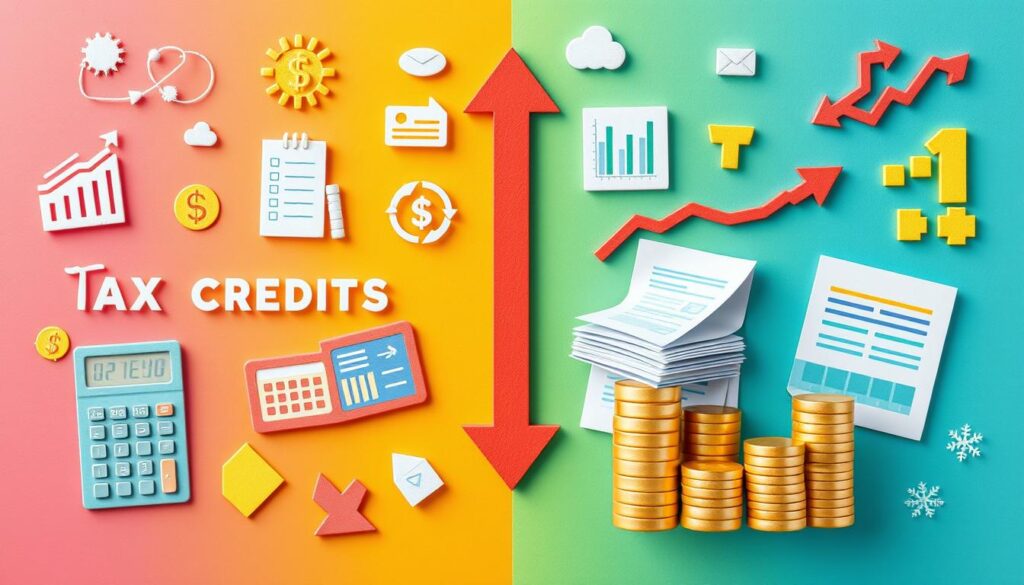
Essential Tips for Record Keeping
Effective record keeping is crucial in optimizing your tax deductions. By actively organizing documentation, you can ensure all necessary papers are easily accessible when preparing your tax return. Understanding how to categorize and maintain your records will benefit you in the long run.
Organizing Your Documentation
Establish a system for your documents that minimizes clutter and streamlines access. For instance, cash register tapes, deposit information, receipts, and invoices are instrumental in tracking your gross receipts effectively for tax purposes24. Always keep canceled checks, credit card receipts, and invoices, as these are vital for documenting your purchases24. Additionally, it is wise to maintain records that include acquisition details, purchase prices, improvements costs, deductions taken, and sale information regarding your business assets24. The IRS recommends keeping records for three years from the date you filed the tax return25.
Using Technology for Efficiency
Leveraging technology can make your record keeping efforts more efficient and organized. Utilize tax preparation software or mobile apps to help manage your documentation throughout the year. This digital approach can enhance your ability to track employment tax records, which employers are required to keep for at least four years25. By incorporating these tools, you can actively monitor your finances, ensuring that you never miss out on tax deductions.

Common Mistakes to Avoid
Various tax pitfalls can lead to significant repercussions for taxpayers. Common mistakes can result in missed opportunities to claim valuable tax deductions or create unnecessary delays during the filing process. By paying attention to potential errors, you can better navigate your tax situation and avoid tax mistakes.
Missing Out on Deductions
Taxpayers often overlook deductions that could yield substantial savings. In fact, the IRS found approximately 2.5 million math errors on returns filed for the 2017 tax year, highlighting how easily people can miss deductions due to simple calculation mistakes26. Using tax software can help avoid common errors and prompt for missing information, leading to potentially valuable credits and deductions27. Choosing the incorrect filing status remains a common issue, which can be easily rectified through resources like the IRS Interactive Tax Assistant27.
Incorrect Documentation
Ensuring that all documentation is accurate is crucial. Inaccuracies, such as missing or incorrect Social Security numbers, can impede the filing process28. Submitting an unsigned return renders it invalid, so consider electronic filing to ensure your signature is captured27. Additionally, approximately 37% of taxpayers may qualify for free filing options, demonstrating the importance of being informed about available resources26. Take time to double-check your math and bank account numbers to facilitate quicker refunds and prevent processing issues28.

Consulting with a Tax Professional: Is It Worth It?
Consulting a tax professional can significantly impact your financial wellbeing. Their insights can optimize your savings strategies and identify potential tax deductions that you may not have been aware of. Professional tax guidance fosters a more manageable and less stressful tax season.
Benefits of Professional Guidance
Engaging with a qualified tax professional can help you navigate complex tax codes. It’s reported that it typically takes around 13 hours to fill out a Form 1040 or 1040-SR according to the IRS29. By leveraging professional assistance, you reduce the risk of costly mistakes, decrease the likelihood of IRS audits, and enhance your overall efficiency29. Tax advisors can provide year-round services tailored to your financial activities, ensuring proactive planning and timely adjustments to optimize your tax situation30. Moreover, hiring a tax professional often translates to savings that exceed the fees associated with their services30.
Finding the Right Professional
When selecting a tax professional, it is crucial to ask specific questions that align with your needs. Look for individuals with a PTIN as they can represent you during IRS audits and other tax-related issues29. Additionally, verify their credentials and seek recommendations to ensure they have a solid understanding of the latest tax rules. Certified public accountants (CPAs) offer extensive services beyond tax preparation, including bookkeeping and financial advice that can benefit small businesses30. A proficient tax professional helps save you time, provides peace of mind, and ultimately maximizes your tax savings29.

Preparing for Tax Season
As tax season approaches, effective tax season preparation is vital for maximizing your deductions. One of the first steps you should take is to create a thorough deduction checklist. This checklist should include various potential deductions such as medical expenses, mortgage interest, and educational costs, making it easier for you to stay organized and ensure that you don’t overlook any available savings.
Creating a Deduction Checklist
Your deduction checklist will serve as a valuable tool to manage your tax-related documents and expenses. Don’t forget to stay aware of important tax deadlines. For instance, if you received over $5,000 in payments through online marketplaces in 2024, you will receive a Form 1099-K PDF by January 2025, which is crucial for accurately reporting your income31. Additionally, keep in mind that to claim the Earned Income Tax Credit (EITC) or the Additional Child Tax Credit (ACTC), the IRS cannot issue refunds before mid-February under the PATH Act32.
Important Deadlines to Remember
Marking your calendar with these important tax deadlines not only keeps you compliant but also enhances your chances for savings. Remember, while the IRS typically issues most refunds within 21 days, you shouldn’t rely on receiving your tax refund on a specific date for planning major purchases or bill payments31. With well-organized records and attention to deadlines, you can reduce stress during tax season and enjoy greater financial peace of mind.
FAQ
What are the key tax deductions I should be aware of for 2024?
How do tax deductions affect my taxable income?
Source Links
- https://turbotax.intuit.com/tax-tips/tax-deductions-and-credits/how-to-maximize-your-itemized-tax-deductions/L1ANcotWP – How to Maximize Your Itemized Tax Deductions
- https://www.schwab.com/learn/story/tax-deduction-basics-and-tips – Tax Deduction Basics and Tips
- https://www.investopedia.com/terms/t/tax-deduction.asp – Understanding Tax Deductions: Itemized vs. Standard Deduction
- https://turbotax.intuit.com/tax-tips/tax-deductions-and-credits/10-popular-tax-deductions/L9JesBWTQ – 10 Popular Tax Deductions
- https://www.nerdwallet.com/article/taxes/tax-deductions-tax-breaks – 22 Popular Tax Deductions and Tax Breaks – NerdWallet
- https://turbotax.intuit.com/tax-tips/tax-deductions-and-credits/tax-deduction-wisdom-should-you-itemize/L8Ln7K0Gp – Standard Deduction vs. Itemized Deductions: Which Is Better?
- https://www.irs.gov/newsroom/deductions-for-individuals-the-difference-between-standard-and-itemized-deductions-and-what-they-mean – Deductions for individuals: The difference between standard and itemized deductions, and what they mean
- https://www.investopedia.com/how-to-maximize-your-tax-return-8422348 – How to Maximize Your Tax Return
- https://1800accountant.com/blog/maximize-small-business-tax-deductions – 7 Tips to Maximize Deductions and Credits in 2024 | 1-800Accountant
- https://www.nerdwallet.com/article/taxes/itemized-deductions-standard-deduction – Itemized Deductions: What They Are, How to Claim – NerdWallet
- https://www.investopedia.com/articles/taxes/08/itemized-deductions-overview.asp – Itemized Deductions: What It Means and How to Claim
- https://www.rocketmortgage.com/learn/tax-deductions-for-homeowners – 7 Tax Deductions For Homeowners: Your Breaks And Benefits
- https://www.irs.gov/publications/p530 – Publication 530 (2023), Tax Information for Homeowners
- https://www.irs.gov/credits-deductions/individuals/qualified-ed-expenses – Qualified Ed expenses | Internal Revenue Service
- https://www.irs.gov/newsroom/tax-benefits-for-education-information-center – Tax benefits for education: Information center
- https://www.irs.gov/retirement-plans/plan-participant-employee/retirement-savings-contributions-credit-savers-credit – Retirement Savings Contributions Credit (Saver’s Credit)
- https://www.schwab.com/learn/story/401k-tax-deduction-what-you-need-to-know – 401(k) Tax ‘Deduction:’ What You Need to Know
- https://humaninterest.com/learn/articles/retirement-plan-contributions-tax-deductible/ – Are Retirement Plan Contributions Tax Deductible? | Human Interest
- https://www.irs.gov/businesses/small-businesses-self-employed/self-employed-individuals-tax-center – Self-employed individuals tax center | Internal Revenue Service
- https://www.investopedia.com/articles/tax/09/self-employed-tax-deductions.asp – 16 Tax Deductions and Benefits for the Self-Employed
- https://www.irs.gov/forms-pubs/guide-to-business-expense-resources – Guide to business expense resources
- https://www.nerdwallet.com/article/taxes/tax-credit-vs-tax-deduction – Tax Credit vs. Tax Deduction – NerdWallet
- https://www.peoplekeep.com/blog/tax-exclusions-vs-tax-deductions-vs-tax-credits-in-healthcare – Tax Exclusion vs. Tax Deduction vs. Tax Credit
- https://www.irs.gov/businesses/small-businesses-self-employed/what-kind-of-records-should-i-keep – What kind of records should I keep
- https://www.irs.gov/newsroom/the-first-step-of-good-tax-planning-is-good-recordkeeping – The first step of good tax planning is good recordkeeping
- https://turbotax.intuit.com/tax-tips/irs-tax-return/common-mistakes-when-filing-taxes-that-are-easy-to-avoid/L4WkkAiCT – 6 Common Mistakes When Filing Taxes That are Easy to Avoid
- https://www.irs.gov/newsroom/common-tax-return-mistakes-that-can-cost-taxpayers – Common tax return mistakes that can cost taxpayers
- https://www.irs.gov/newsroom/taxpayers-should-avoid-these-common-mistakes-when-they-file-their-tax-return – Taxpayers should avoid these common mistakes when they file their tax return
- https://www.goldenappleagencyinc.com/blog/benefits-of-hiring-tax-professional – 9 Benefits of Hiring a Tax Professional to Prepare Your Return
- https://www.ramseysolutions.com/taxes/benefits-of-hiring-tax-advisor?srsltid=AfmBOopSZZVfzBZkqT4ViiOIhyLym6Oo3JBlA3WR0JuvzwP66sDD3z4d – 5 Benefits of Hiring a Tax Advisor
- https://www.irs.gov/newsroom/prepare-to-file-in-2025-get-ready-for-tax-season-with-key-updates-essential-tips – Prepare to file in 2025: Get Ready for tax season with key updates, essential tips
- https://www.irs.gov/individuals/get-ready-to-file-your-taxes – Get ready to file your taxes

